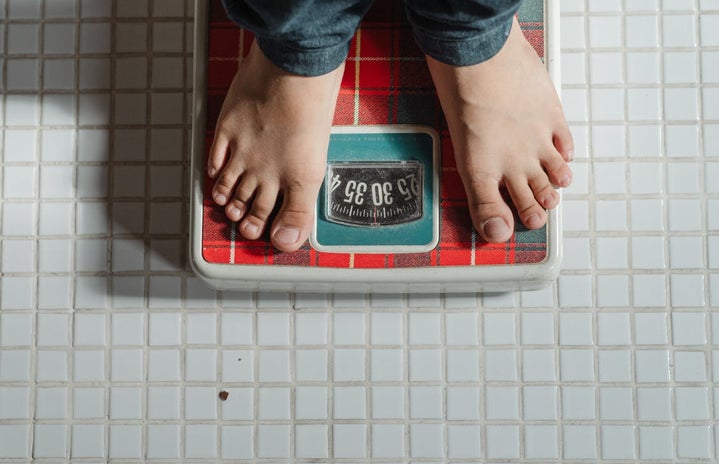*Trigger Warning: Eating Disorders.*
When I was 12, I ventured into the #thinspo realm of Tumblr. I was overwhelmed, yet fascinated, with images of picture-perfect “Tumblr girls.” Captivated by their long brown hair, four inch thigh gaps, and concave stomachs, I wondered why my body didn’t look like theirs.
What would I have to eat, or not eat, to look like these womxn?
This was the first time that I was affected by toxic diet culture. What I didn’t know at the time though, was that I was just another victim of the 120 year war on the female body.
At the turn of the 19th century, demonized groups such as womxn and POC (generally) had more fat on their bodies. So, evolutionary biologists labeled “fatness” as a bad thing. This began “fatphobia” and the very profitable diet and weight loss industry: an ever-evolving beast that took root in the 20th century.

- Cigarettes as appetite suppressants
- In the 1920s, Lucky Strike began advertising their cigarettes as appetite suppressants. Not only were they peddling tobacco as a replacement for food, but they were also telling womxn that they shouldn’t be eating.
- Tapeworm Diet Pills
- In the 1950s, it was rumored that a celebrity lost 65 pounds to a tapeworm. So began tapeworm diet pills…. gross.
- Heroine Chic
- In the 1990s, womxn were expected to follow the “heroin chic” trend. Models like Kate Moss popularized a look where womxn were thin to the point where they looked sickly. Literally like they were addicted to heroin. Not only did this glorify drug abuse, but it also promoted eating disorders.
These phony weight loss solutions and unhealthy trends may seem vintage to us now, but ludicrous messages like these never went away. Now, in the 21st century, social media disguises toxic diet culture and spreads it to a much wider (and much younger) audience.
-
Rather than selling cigarettes as a replacement to food, we have Kim Kardashian advertising appetite suppressing lollipops.
-
Instead of phony diet pills, we have the Tik Tok trend “What I Eat in a Day”, where influencers advertise meal plans that often include dangerous calorie deficits.
-
Finally, instead of aspiring to achieve the “heroin chic” look, womxn are expected to look like insta baddies: many of which photoshop their waists and hips to unrealistic and unattainable sizes.
It’s easy to fall victim to these socially constructed attacks on our bodies, especially when they’re normalized into trends or seemingly “innocent” posts. It’s time for our generation to start sifting through social media with a fine-toothed comb, throwing out what’s fake, and focusing in on what’s real.
Toxic diet culture is something that never should have existed in the first place, but now that social media is taking it to a new level, it’s more important now than ever to stop it.



